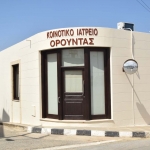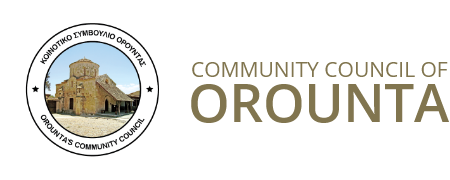History
Orounta, one of the most beautiful villages of the Nicosia District, is located only 36 kilometres away from the city of Nicosia. The village is built on a southward slope, on a mean altitude of 290 metres above sea level and is located east of the river of Peristerona, on the bank of side river Serrachis.
It is a village with a rich history, where elements from the past coexist harmonically with the present. Now, let’s get to know the beautiful Orounta better.….
The village in the past
Originally, Orounta was built at the location “Loukka”, southwest of the village’s present location, on the banks of river Serrachis. At the beginning of the 1st century, the residents moved from the location “Loukka” to the present location of the village. They were driven to the decision to move to the present location to either save themselves from an epidemic or from frequent floods. In particular, the location “Loukka” used to flood very often due to its closeness to the river and because the ground has many concavities.
The residents that moved from the location “Loukka” to the present location of the village appear to have chosen the location of the new housing with great attention. It is not accidental that the village was built amphitheatrically on a hill, this way making sure that it would be protected from floods and that it would enjoy a beautiful open view.
Unfortunately, there are not sufficient data about Orounta of the medieval years. According to Mas Latri, during the Frankish occupation, Orounta used to be a royal estate which would administratively fall under the area of Morphou. What is noteworthy is that Mas Latri refers to the village by the name Orondes. Generally, the village is not marked in old maps with its current naming.
Naming
The naming of the village was originally different from the present one. The name derived from some older naming and in particular from:
- The naming “Nerounta” which is linked to the abundance of clean water in the village.
- The name “Orovounta” which proves the occupation of the residents with the extended cultivation of the pomegranate or else called the bitter vetch, a cultivation which was spread in the village by some people who had moved to our village from Pafos. It is worth mentioning that in 1904, Orounta, as the Great Cyprus Encyclopaedia preserves, paid the tithe tax by giving 105 kg of pomegranate. In addition, the pomegranate was the basic feed of the animals.
- The name “Oroounta” which includes the word “oros” (mountain) and is formed after the location of the village. What is also noteworthy is that the present name of the village is more likely to have derived from this particular name since, as it is explained by the book “Orounta”, “the hills which end up in the mountain region of “Madari” start from the village”
Population
The population of Orounta in the latest years numbers approximately 800 residents. Up until 1963, when the intercommunal riots took place, Turkish Cypriots also lived in Orounta. In particular, the population numbers presented in the table below included 64 Turkish Cypriots in 1931, 52 in 1946 and 39 in 1960. After the Turkish invasion of 1974, many refugees settled in Orounta and therefore a self-housing was created. Presented below is the populating course of Orounta which is characterized by many variations.
| Year | Population | Year | Population |
| 1881 | 389 | 1946 | 554 |
| 1891 | 433 | 1960 | 640 |
| 1901 | 489 | 1973 | 607 |
| 1911 | 547 | 1976 | 803 |
| 1921 | 577 | 1982 | 789 |
| 1931 | 562 | 2001 | 658 |
Natural Environment
In the past, Orounta was covered in green and was surrounded by a forest. Unfortunately, however, the forest was scalped since the residents needed to cut the trees to make charcoals to light their furnaces.
Nowadays, there are mainly cultivations with citrus fruits such as lemon, orange, and grapefruit trees, vegetables, potatoes, almond trees, grains, carob trees and pulses. In the old years, there were also cultivations of flaxes, cumin and aniseeds. Moreover, there are many olives in the valley of Peristerona, some of which have stood like sleepless guards for many years, possibly even from the Frankish period.
Occupations
The residents of Orounta have dealt with farming and mainly stock-breeding for many years. In fact, several villagers deal with the breeding of pigs. After all, it is not accidental that Orounta constitutes the No1 village in the whole island as far as the production of pork meat is concerned. What is more, several dairy products such as yoghurt, and the traditional white cheeses of Cyprus “halloumi” and “anari” are produced in Orounta. Finally, as the two watermills on the banks of the river of Peristerona “testify”, one of the traditional professions of our country, that of the miller, survived in our village.
Churches
In Orounta there is a church dedicated to Apostle Lukas and a monastery dedicated to Agios Nicolaos. More: Churches
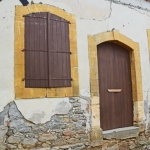
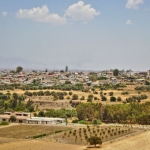
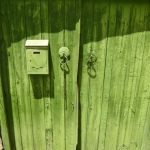
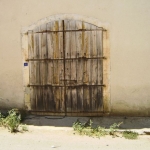
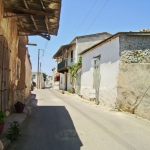
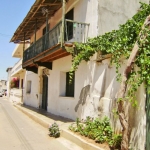
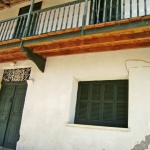
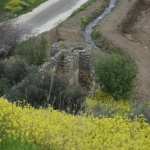
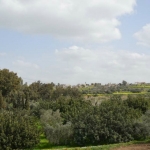
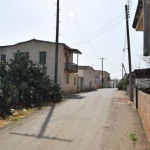
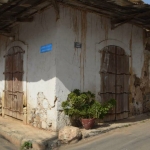
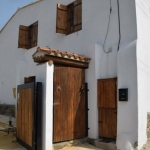
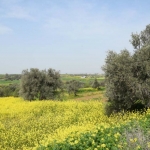
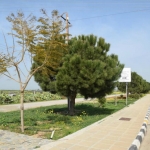
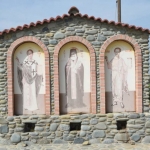
Sources:
“Orounta”, 1993
Karouzis, Strolling around Cyprus, Nicosia, City and District, Nicosia 2002
Great Cyprus Encyclopaedia, vol.11
Old Orounta
Orounta 1900
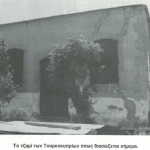
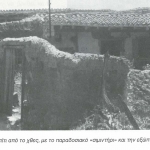
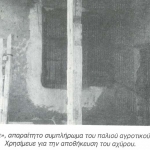
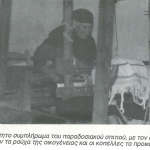
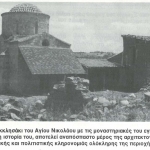
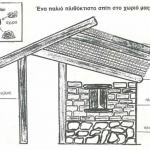
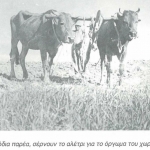
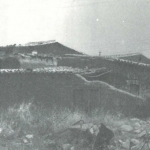
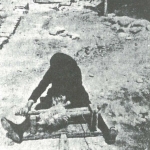
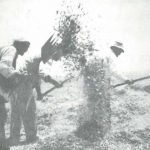
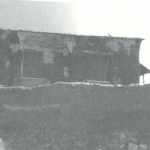
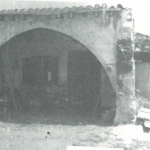
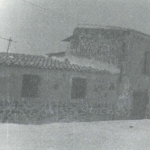
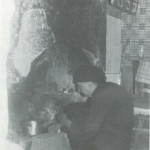
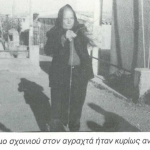
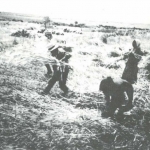
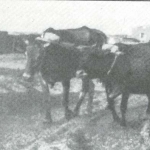
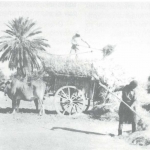
Heroic Fight Figures
“While browsing through” the pages of the history of Orounda one learns about the participation of its residents in the Balkan Wars, in World War II, in the National Liberating Fight, in the intercommunal unrests of 1963-64 and in the war against the Turkish invaders in the summer of 1974. So, let’s continue by learning about the fights of Orounda by referring to people and events which marked each fight.
Participation in the Balkan Wars
Our fellow villager X. Chasapis fought as a volunteer in the Greek-Turkish war of 1897 and in the Balkan Wars of 1912-13. He was injured at the Kresna Straits by shrapnel fragments. X. Chasapis and two of his fellow fighters were honoured for their contribution in 1931 during an event held in Strovolos.
National fundraisings for the Balkan Wars were held in 1912-13 and according to records of that time the money was directly sent to Athens.
Participation in World War II
When World War II broke out, the English recruited people from their colonies and among them were thousands of Cypriots including our fellow villagers Michael Kolas, Kyriacos Kourelias and Andreas Fragkoulides.
Participation in the National Liberating Fight (1955-59)
During the fight of 1955-59, several fellow villagers of ours fought for the freedom of our country. Their participation was crucial and everybody contributed in throwing off the yoke of the English in their own way.
The English arrested, imprisoned and tortured Nikos Zonias. He was held for three days at the Keryneia Gate, for forty days at the prison of Pyla and for five months at the prison of Kokkinotrimithia.
Intercommunal Unrests (1963-64)
Many residents of our village took part in the battles which took place during the intercommunal unrests and mainly in those at Omorfita. Two of our fellow villagers, Andreas K. Komodromos and Philippos Panayiotou were seriously injured during the battles of Masoura and Omorfita.
Our Turkish-Cypriot fellow villagers left on January 29th, 1964 and went to Peristerona aiming to create an enclave and be united with Lefka and Elia. However, they failed and they all left for Kioneli and Mitzeli.
Turkish Invasion (1974)
In 1974, many residents of our community fought against the Turkish invaders. Many of them were injured, while others were taken prisoners and sent to Turkey. Unfortunately, three of them are included in the long list of the missing persons.
KyprosYianniandCostasPapasiantis: They served in the 251 Infantry Battalion in Glykiotissa which is located just a few kilometres from Pente Mili in Keryneia. They were captured in Keryneia and remained imprisoned for 15 days. Next, they were sent to Turkey, to the prisons of Adana in Turkish ships and they were imprisoned and tortured. After the second Turkish invasion, they were transferred to Amasya where they remained for one and a half month. On October 28th, 1974, the Turks released them to the Cypriot Authorities.
NicosNicolaou: He served in the 286 Infantry Battalion. On July 29th his battalion headed towards Karavas where they engaged in battle. Later on, the battalion moved to Lapithos where they took part in another harsh battle against the Turks on August 7th. After an unsuccessful attempt to escape, they managed to return to Lapithos where an old lady, Mrs Efrosyni, provided shelter for them. Next to her house there was a cave where they hid until September 4th. The Turks went door to door searching for them without success. However, their hideout was revealed when the Turks arrested another soldier who was forced to betray them. The soldiers then had to surrender but the Turks shot Nicos and two other soldiers, whom they kept injured at the Serai for 16 days. On September 21st, during the first prisoner exchange, Nicos was released.
MichalisIoannouKomodromos: He served as a sergeant and was discharged from the army in 1974. He enlisted as a reservist and joined the 281 Infantry Battalion in Vasileia. He remained in Pentadaktykos for five days. On July 30th he was severely injured in the left hand during a battle in Lapithos. He was then taken to Myrtou to receive first aid, while later on he was transferred to a clinic in Morfou. He was discharged from the army in January 1975.
Persons Missing since the Turkish invasion (1974)
Georgios Melifronides: He was born in May 1955. He was a cadet officer and served in Pella Pais. He had returned from Greece just a few days before the war. He fought in the area of Agios Ilarionas. His comrades last saw him on July 22nd, 1974, while he was transferring a friend of his to the doctor. He was 19 years old when he went missing.
Costas Andreou (Kokka): He was born in 1953. He served in the armoured divisions. During the first invasion he enlisted in Kokkinotrimithia. He served at a post in Omorfita alongside three other soldiers. Unfortunately, all four of them were seriously injured, two of which fatally. According to other soldiers, the injured soldiers were forced to abandon the area to survive. At the same time the Turks invaded Omorfita.
PashiasStelios: He was born in 1945. He was a reservist soldier during the Turkish invasion. He was captured on August 15th, 1974 in Palaekythro. He was sent to the prisons of Amasya and he has been missing since then.
Source:
Orounda Community Council Texts
Cultural Architecture
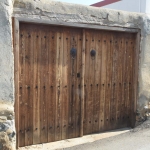
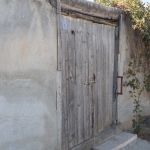
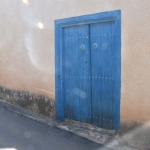
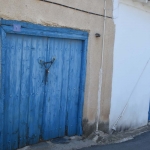
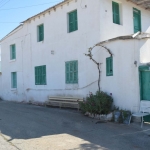
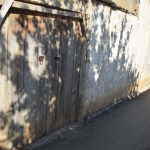
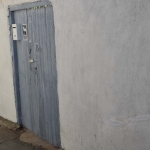
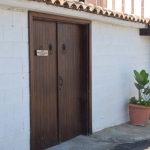
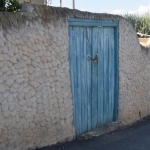
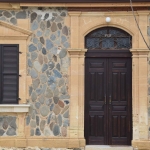
Projects
Τradiotions
Customs
Christmas Customs
The village’s housewives begin preparations for the Christmas holidays many days in advance. Once they have thoroughly cleaned the houses and whitewashed the walls, they prepare several tasty dishes such as Birth-pies and Christ-bread.
What is more, the family prepares greeting cards and sends them to their beloved ones, friends and relatives. One of the most beautiful moments of Christmas preparation is when the Christmas tree is decorated by the whole family.
After the end of the Christmas service, the residents of the village exchange warms wishes and at noon of the same day, friends and relatives gather to celebrate the day by enjoying a rich feast including stuffed turkey, Christmas cake, sugared shortbreads and small honey cakes.
Source:
“Orounta”, 1993
New Year’s Day Customs
One of the New Year’s Day customs, which is unfortunately not so popular nowadays, is the butchering of the pig. In particular, in the old years, each household would butcher a pig and would make several traditional cold-cuts such as “zalatina”, sausages and “lountza”. What used to really bring joy to children was the “balloon” of the pig which was used to make footballs.
On New Year’s Eve, each housewife prepares the king’s pie and places a coin in it. The pie is cut right after the beginning of the New Year. It is believed that the person who finds the coin will have luck during the whole year.
On the night of New Year’s Eve, the family sits next to the lighted fireplace and each family member throws an olive leave into the fire and asks Santa to reveal whether he or she is loved by a particular person. Next, as it is described in the book “Orounta”, “if the leave hops, then this means that the person we have asked for loves us. If the leave does not hop, then that person does not love us.
Source:
“Orounta”, 1993
Theophany
On the day of Theophany, Christians attend a mass in church carrying small containers in which they place some holy water and an oil lamp so that they can bring Holy Light into their house”.
Both the holy water and the Holy Light are transferred to the houses so that people can “have their houses, premises, animals and trees blessed”.
Additionally, on the day of Theophany, housewives make doughnuts, some of which are thrown on the roofs of the houses so that the fictional creatures of our tradition called “kalikatzaroi” would eat and go away from the village. While they throw the doughnuts the women urge these creatures to eat and go away.
Another custom preserved up until today involves children visiting their grandparents and asking for pocket money by reciting a traditional verse.
Source:
“Orounta”, 1993
Carnival/Shrovetide Sunday
The Carnival is one of the most beloved people’s celebrations and especially for children. Many folkways revive during the days of carnival festivities including swing playing. In the past, young ladies would gather in a house and hang the swings. Next, they would sit on the swings and joyfully sing traditional songs.
A few days before, as well as on Shrovetide Sunday,the housewives of Orounta prepare various traditional pasta dishes with cheese such as ravioli and “poureki”. On the night of Shrovetide Sunday, friends and relatives gather in houses to celebrate together. Many of them even dress up and go from door to door to “see whether their fellow villagers will recognize them”. This custom makes everybody in the village burst into laughter.
Source:
“Orounta”, 1993
Green Monday
On Green Monday, people go to the fields in groups to eat vegetarian food on the first day of fasting. Green Monday marks the beginning of fasting which lasts until the Sunday of Easter. Moreover, on Green Monday the children have the habit of flying their kites, which they usually make by themselves.
Source:
“Orounta”, 1993
Easter Customs
The residents of Orounta celebrate the biggest holiday of Christianity, the Resurrection of Christ.
On the Saturday of Lazarus, a group of children, one of which is “covered with wild flowers” pretending to be Lazarus, go around the village chanting “Lazarus’ song”. Each household offers the children “eggs, money and various treats”. It is worth mentioning that “in the old years, housewives would lead the children to the hen-houses so that they would sing Lazarus’ song there since they believed that if the chickens listened to the song, they would lay more eggs needed for the making of the traditional dishes of “flaouna and tsoureki”.
During the mass of Palm Sunday, as soon as the priest reads the gospel, the loyal throw olive leaves which symbolize the entry of Christ in Jerusalem.
On Holy Monday, similarly to what happens on the days before Christmas, housewives clean their houses thoroughly. On Holy Thursday, they make traditional bread, “tsoureki” and “flaouna”, whereas they also paint eggs by using onion leaves and various wild flowers”.
On the morning of Holy Friday, the girls decorate the Sepulchral using flowers they had gathered earlier from the yards of the houses. On the night of Holy Friday, the bells ring mournfully, the icons inside the church are covered with black cloth and some girls dressed in black act as the women who used to accompany Christ bedew the Sepulchral.
In the morning of the next day, on Holy Saturday, while the priest of the village chants “Christ Has Risen”, the bells ring joyfully, the loyal knock their benches in church and the black cloth falls from the icons. In the afternoon of Holy Saturday, the villagers start to gather pieces of wood and transfer them to the foreyard of the church. The pieces of wood are placed in the shape of a pyramid, on the peak of which a dummy of Judas is placed.
While villagers gather the pieces of wood, the housewives of Orounta prepare a traditional “soup with cinnamon, spices and tough meat”, which is cooked in the following procedure: “since the afternoon, the women heat the traditional clay oven by burning logs and once the oven is heated, they place the food inside. When the food has been placed into the oven, the oven is sealed with a piece of marble and mud so that the heat will remain in it.
On the night of Holy Saturday, the sounding of the bell calls the loyal to church so that they can attend the mass of the resurrection of Christ. As soon as the priest and the vicar chorals chant “Christ Has Risen”, villagers light their candles and exchange wishes. In the meantime, they light fire and burn Judas’ dummy.
Once the mass of the resurrection is finished, the loyal go to their houses, chink their eggs and eat “flaouna along with other traditional dishes”.
On the Sunday of Easter, villagers celebrate the Resurrection of Christ by cooking lamb on fire, whereas on the Monday and Tuesday of Easter, they gather in the church’s foreyard and play traditional games. It is noteworthy that during these days, many friends and expatriates visit Orounta to celebrate with the villagers and to participate in the traditional games.
Source:
“Orounta”, 1993
Toponys
Community Clinic
